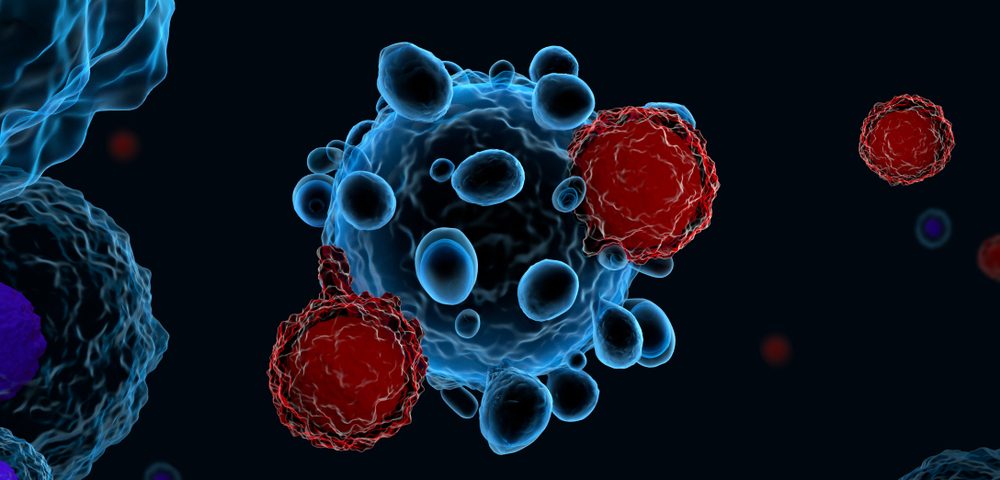The National Cancer Institute (NCI) has awarded a five-year $12.5 million grant to City of Hope that may help improve treatment by using a vaccine, develop an immunotherapy to shut down a gene involved in B-Cell non-Hodgkin’s lymphoma, and understand who is at risk of developing a serious complication from stem cell transplants.
The lymphoma Specialized Programs of Research Excellence (SPORE) grant is the third of its kind awarded to City of Hope and supports projects that could led to new strategies in the prevention, early detection, diagnosis, and treatment of cancer.
“For many years now, City of Hope has led the way in pioneering bone marrow transplantation, immunotherapy and other innovative treatment options for lymphoma patients,” Stephen J. Forman, MD, said in a press release. Forman is a principal investigator for the grant and leader of the Hematologic Malignancies and Stem Cell Transplantation Institute at City of Hope.
“This renewal of lymphoma SPORE will make it possible for us to continue developing leading-edge therapies in our laboratories that will ultimately reach a patient’s bedside,” Forman said.
Larry W. Kwak, MD, PhD, also a principal investigator and director of the Toni Stephenson Lymphoma Center, where the research is ongoing, said the advancements will use molecular biology and cellular immunology approaches.
One of the funded projects looks to improve treatment of patients with non-Hodgkin’s lymphoma who either still have cancer cells after undergoing a blood stem cell transplant, or are unable to receive such a procedure.
A strategy is to combine a transplant with chimeric antigen receptor (CAR) T-cell therapy, which consists of collecting a patient’s own immune T-cells and modifying them to improve recognition and killing of cancer cells. That approach already has led to positive results in Phase 1 clinical trials (NCT01318317 and NCT01815749) in non-Hodgkin’s lymphoma patients.
Now looking for ways to improve this treatment, the scientists will test adding CARs specific for the CD19 cell surface protein in tumor B-cells to a virus-specific T-cell that can be multiplied using a vaccine. One example is the cytomegalovirus (CMV), which has the greatest number of T-cells in the human body targeting the virus.
The so-called Triplex vaccine already showed good safety results in a Phase 2 trial (NCT03560752) in transplant patients. The investigators hope the vaccine will increase the number and longevity of CAR T-cells to better fight the disease.
Three different trials will be conducted in non-Hodgkin’s lymphoma patients. In the first, patients will receive chemotherapy followed by the Triplex vaccine. In the second, they will receive a transplant with their own blood stem cells and the vaccine. And in the third study, participants will undergo stem cell transplant with stem cells from a donor and followed by the vaccine.
Two other trials intend to effectively treat patients with relapsed or refractory high-risk Hodgkin’s lymphoma so they are able to receive a bone marrow transplant.
The first of these two studies is a Phase 2 trial of response-adapted sequential treatment using a combination of Opdivo (nivolumab, by Bristol-Myers Squibb) with a chemotherapy regimen containing ifosfamide, carboplatin, and etoposide phosphate. This study also uses new methods to assess the impact of PD-1 blockers such as Opdivo (which prevent the binding of PD-1 proteins on immune T-cells to PD-L1 on cancer cells, boosting the immune response) on the area surrounding Hodgkin’s lymphoma cells.
A second goal of the project is to start a Phase 2 trial of a targeted therapy that uses a CD25 antigen (a marker of activated T-cells) to kill cancer cells. Preliminary results from a Phase 1 study showed that a regimen containing the immunotherapy, an autologous stem cell transplant, and radiation targeting the tumor area may be efficient and well-tolerated.
Another project will proceed the development of an immunotherapy that already demonstrated the ability to stop the expression of the STAT3 gene, which has been linked to the development of B-cell non-Hodgkin’s lymphoma. No currently approved therapy in the U.S. has such an effect. In animal models, this potential treatment also stimulated the immune system to kill tumor cells and boosted radiation therapy’s effectiveness.
City of Hope will start a Phase 1 clinical trial to test the treatment’s safety and whether it can be injected into tumors. The participants also will receive low-dose radiation therapy.
A more effective, second-generation therapy will be evaluated in animal models. This investigational treatment also is expected to both attack lymphoma cells and strengthen the immune system’s anti-cancer response.
“B cell lymphomas can be very difficult to treat, which is why City of Hope continues to develop and produce innovative targeted therapies for lymphoma that can also restore the immune system to fight cancer,” said Hua Yu, PhD, co-leader of the Cancer Immunotherapeutics Program at City of Hope. “Our new therapies would be the first drugs to both kill tumor cells and activate the immune system.”
If effective, the new therapy also might be used in other cancers where STAT3 is implicated, such as leukemia and pancreatic cancer, Yu added.
A separate project is trying to develop a prediction model with clinical and genetic data to determine a patient’s risk of developing therapy-induced myelodysplasia/acute myeloid leukemia (MDS/AML), a complication found in 6 to 8% of lymphoma patients who receive a stem cell transplant and the leading cause of non-relapse mortality in these patients.
The team from City of Hope, University of Alabama at Birmingham, University of Minnesota, University of Nebraska, St. Jude Children’s Research Hospital and Dana Farber Cancer Institute, also intends to understand how to personalize treatment and prevent disease development.


